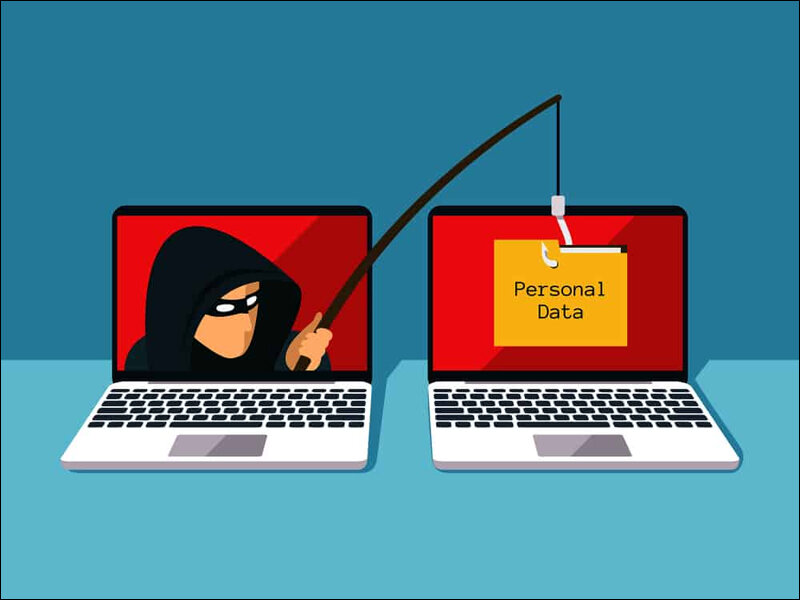Cyber security is going to be a hot topic this year with lots of cyber thefts and breaches expected. Adarsh explains the alarming situation…
Technological advancement is not always a good thing. For all the goodness it brings, there also exists the flipside wherein problems beyond our control are birthed. For instance, with the rise in data breaches, phishing attempts, ransomware infections and identity thefts, it seems like this year is going to be a security nightmare as far as cyber safety is concerned.
Here are the 7 of the most likely ways in which technological breaches may occur:
1. Personal Information

With more personal information available online these days, data theft is on the rise. Hackers are devising new ways to steal information and everyone is at risk. Earlier, cybercriminals used to target business enterprises mainly. But in recent times, the attacks have been targeted towards small businesses and individuals as well. So, anyone’s data could be at risk.
With WFH and Hybrid models becoming prevalent, hackers can access personal info as well as company’s data from personal computers. This has increased the need for data protection and security solutions as well.
These days, personal information is becoming increasingly available on the dark web as well.

2. Phishing

In simple terms, phishing is fraudulent communication that appears to come from a reputable or authentic source. But in reality is just a ploy to steal your data or your money. In most cases, people are targeted through phone call, emails or text messages. Cybercriminals pose as legitimate institutions and steal sensitive data like personally identifiable information, banking and credit card details, and passwords.
These have been around for a few years now and people are getting more aware and careful about these phishing attacks. But there still exists a large part of the population who started accessing technology very recently and are unaware of such thefts. Even the older population in metros and bigger cities are vulnerable to such attacks. Criminals often pose as concerned customer care agents who need their information urgently in order to prevent a service or subscription from getting cancelled.
3. Deep Fakes

Deepfake are digital photos, videos or sound files of a real person that has been edited to create a very realistic but false depiction of them doing or saying something that they did not actually do or say.
It is the 21st century version of photoshopping and now there are all kinds of fake videos online. There is a deepfake of Barack Obama calling Donald Trump ‘a complete dipshit’ and there’s another one of Mark Zuckerberg bragging about having ‘total control of billions of people’s stolen data.’ But that’s not even the tip of the iceberg…
The AI firm Deeptrace found 15,000 deepfake videos online in September 2019 and a staggering 96% were pornographic and 99% of those mapped faces from female celebrities on to porn stars. The number of videos had doubled from the start of that year. The exact number would’ve increased exponentially by now.
With new techniques and software allowing unskilled people to make deepfakes with just a few photos, fake videos are very likely to fuel revenge porn in the coming months and years.
4. Social Media Safety

The fear of disinformation, cyber bullying and minimal harassment moderation on major social media platforms like Facebook and Instagram has led to several longtime users looking for alternative options. Elon Musk‘s acquisition of Twitter has also seen a lot of drop-offs and uninstalls.
Lesser known social media platforms like Mastadon, Hive Social and Post are fast gaining popularity but they run the risk of data breaches. These websites and apps are not as protected as the bigger platforms and hence cybercriminals will find it easier to hack and bypass their security systems.
With the mounting number of users and ensuing attention, these platforms are going to have a task on their hands to keep their users’ information safe.
5. Scams in Virtual Places

2023 could even see scams in the metaverse! Identity thefts and deepfake attacks are already happening in the real word but very soon, similar incidents could happen in virtual places as well. According to a NordVPN survey, 55% don’t know what the metaverse is and among those who do, 87% have privacy concerns. But human curiosity means that more and more people are exploring the virtual space each day.
All this means that companies will have a hard time identifying and authenticating its users as passwords falling in the wrong hands in the metaverse could result in all sorts of problems. Businesses will have to keep verifying their users’ identification and will have to deploy continual authentication in order to ensure safety.
6. Ransomware

In layman terms, ransomware is a type of malicious software designed to block access to a computer system until a sum of money is paid. It targets high-profile companies as well as individuals and is continuing to gain notoriety. It can attack widely, rapidly, aggressively and randomly which means that it is very difficult to track or contain.
Things are going to get worse this year as ransomware as a service is on the rise. Smaller businesses and individuals don’t have the technology or resources like bigger enterprises to counter this threat.
7. Adversarial AI

Adversarial AI is the malicious development and use of advanced digital technology that have intellectual processes typically associated with human behavior. These include the ability to learn from past experiences, and to reason or discover meaning from complex data.
AI algorithms can be trained on manipulated data also known as ‘poisoned data,’ which can cause the AI to make incorrect decisions or take malicious actions. Additionally, attackers can create Adversarial AI which are inputs designed to fool an AI system into making an incorrect decision.
Adversarial AI can also be vulnerable to cyber-attacks through AI algorithms used to manipulate and deceive individuals. This involves creating fake social media profiles or websites that appear legitimate but are actually designed to collect sensitive information or spread malware. Adversarial AI can also be used to enhance and continue existing attacks, such as disrupting critical infrastructures like power grids or transportation systems.
All in all, there will be all kinds of cybersecurity threats this year and all we can do is be extremely wary. By ensuring that we don’t share any critical information and by employing extreme security measures like two-factor authentication and dissimilar passwords, we can do our best to steer clear of these threats.
All in all, there could be all kinds of cybersecurity threats this year and we need to be extremely wary. Here are some measures we can take to stay secure and ensure that we don’t accidently share any critical information:
1. Use only secure Wi-Fi networks
2. Encrypt your devices
3. Enable remote wiping
To know more about these and 5 other ways to stay safe and avoid data breaches, click here.
In case you missed:
- Why is Indian Education Sector facing Record Number of Cyberattacks?
- How to spot a Deepfake Video
- 7 Online Scams to be Wary of in India
- New Year, New Scam: All You Need to Know About Brushing
- Cloudflare’s One-Click Solution for Image Verification
- WhatsApp introduces Advanced Chat Privacy for Increased Security
- You can Now Create a Video From a Single Image!
- OpenAI finally unveils its Advanced Voice Assistant!
- 15 Billion Transactions a Month! How UPI is transforming India’s Digital Economy
- 14 Things to do Immediately if you Lose your Phone










